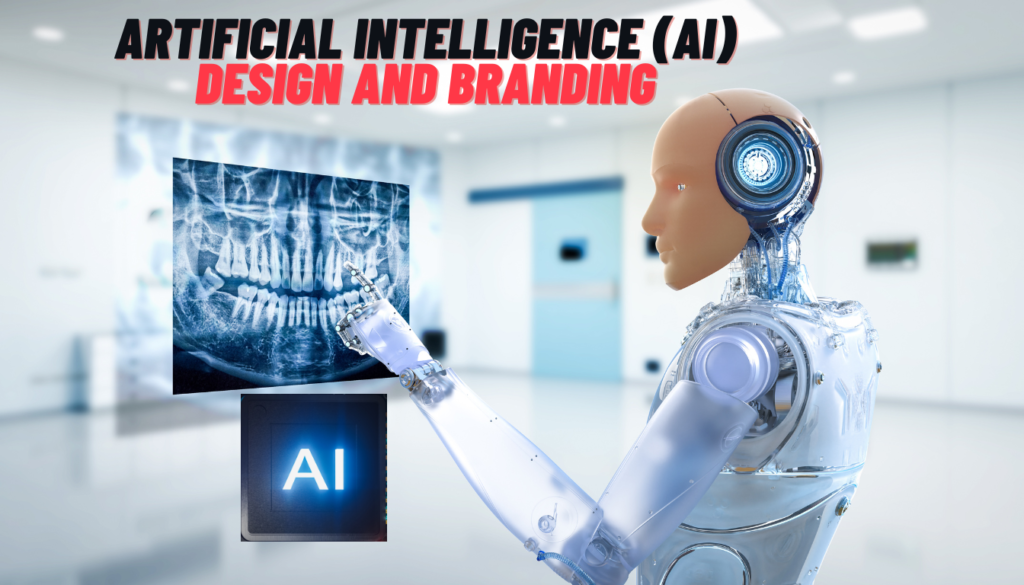Introduction
In today’s competitive digital marketplace, it is crucial for businesses to distinguish themselves from their competitors through creative multimedia designs. Design and branding essentials play a significant role in capturing the interest and imagination of the target audience. From attractive logo designs to user-friendly website interfaces, eye-catching social media designs, and creative branding, every element of a brand’s visual image contributes to conveying its values and standing out in the crowd. Hiring skilled designers who understand the company’s vision and values is vital to realizing the full potential of design and branding essentials.
Points to Note:
- Graphic design basics are essential for creating a visually appealing brand image.
- Design and Branding tips help convey the personality and values of a brand.
- Visual identity through logo design elements contributes to brand recognition.
- Typography and color psychology in design play a crucial role in evoking emotions and conveying messages.
- Brand consistency across different platforms helps create a unified and memorable brand image.
Table of Contents
History and Development
| Period | Milestone | Description | Significance | Image Suggestion |
|---|---|---|---|---|
| Ancient Civilizations | Symbols and Emblems | Early forms of branding involved the use of symbols and emblems to identify ownership and origin. | Established the concept of using visual symbols for identification. | Ancient pottery with symbols or emblems. |
| Middle Ages | Heraldry | Families and organizations used coats of arms and heraldic symbols for identification and representation. | Introduced the idea of visual identity for families and institutions. | Examples of medieval coats of arms. |
| 15th Century | Printing Press | The invention of the printing press by Johannes Gutenberg revolutionized the dissemination of information and branding materials. | Enabled mass production of printed materials, standardizing fonts and designs and branding. | Early printed materials and the Gutenberg press. |
| 18th Century | Industrial Revolution | Mass production led to the need for distinguishing products through unique branding. | Birth of modern branding as companies sought to differentiate their products. | Early advertisements and product packaging from the Industrial Revolution. |
| Early 20th Century | Corporate Branding | Companies like Coca-Cola and Ford developed strong brand identities with logos, slogans, and consistent messaging. | Solidified the importance of consistent brand identity and marketing. | Early Coca-Cola advertisements and Ford logos. |
| Mid 20th Century | Brand Management | The concept of brand management emerged, focusing on maintaining and enhancing brand perception. | Recognized the strategic importance of branding in business success. | Brand management materials and campaigns from the mid-20th century. |
| Late 20th Century | Digital Revolution | The advent of computers and the internet transformed how brands communicate and engage with audiences. | Expanded branding to digital platforms, enabling interactive and multimedia experiences. | Early websites and digital branding elements. |
| 21st Century | Social Media and Globalization | Social media platforms and global markets have redefined brand communication, making it more dynamic and interactive. | Brands can reach global audiences instantly and engage with consumers directly. | Examples of social media branding and global advertising campaigns. |
The Importance of Attractive Logo Designs and Branding

A professionally created and eye-catching logo serves as the foundation of your company’s identity. It not only conveys the personality and values of your brand but also builds credibility and trust with your audience. A logo should be distinctive, timeless, and adaptable for use across various digital platforms and promotional materials.
| Benefits of Attractive Logo Design and Branding |
|---|
| Enhances Company Identity |
| Expresses Brand Personality |
| Builds Credibility and Trust |
| Aids in Brand Recognition |
| Adaptable for Various Platforms |
Investing in a professionally designed logo not only showcases your company’s identity but also leaves a lasting impression on your target market. By incorporating elements of your brand’s personality and values, you can create a logo that resonates with your audience, increasing brand recognition and establishing a strong brand presence. Moreover, a well-designed logo is adaptable for use across various marketing materials and platforms, ensuring consistency and boosting brand recognition.
Creating a User-Friendly Website Interface

Website Design and Branding (web design and branding)
The design of your brand’s website plays a crucial role in its online visibility. Within seconds of landing on your website, visitors form an impression. A visually appealing website with an easy-to-use interface and enticing images can greatly enhance the user experience, increase engagement, and improve the chances of conversions.
Branding Elements
Consistently using branding elements such as color schemes, typography, and photography across your website helps create a unified and memorable brand image. When visitors navigate your website, they should feel a sense of familiarity that aligns with your overall brand identity and values. This brand consistency not only builds trust but also reinforces your unique positioning in the market.
Visual Appeal of Design and Branding Essentials
Consider the visual appeal of your website in terms of layout, use of whitespace, and the placement of key elements. A clutter-free design with clear navigation and intuitive functionality ensures that visitors can easily explore your website and find the information they need. Incorporating visually enticing images and compelling graphics can further enhance user engagement and make a lasting impression.
Positive User Experience
Moreover, a user-friendly website interface contributes to a positive user experience. When visitors can easily navigate, find what they are looking for, and interact with your website seamlessly, they are more likely to stay longer, explore different sections, and potentially become loyal customers.
Captivating Social Media Graphic Design and Branding

In today’s social media-dominated environment, the power of attractive digital design and branding cannot be underestimated. Social media platforms provide an unparalleled opportunity to connect with your target market and showcase your brand’s unique personality. The visual content you share on social media plays a vital role in capturing your audience’s attention, increasing engagement, and expanding your brand’s reach.
Eye-Catching Graphics
By utilizing visually appealing videos, eye-catching graphics, and professionally created social media posts, you can make your brand stand out from the competition. Stunning designs and branding not only enhance the aesthetics of your content but also make it more shareable.
Brand Identity and Values
When crafting your social media designs, it’s important to keep your brand’s personality in mind. Your design and branding should reflect your brand identity and values, creating a cohesive visual experience across all platforms.
Driving Engagement
Engaging social media design and branding also play a crucial role in driving engagement. By creating visually compelling content, you can capture your audience’s attention and encourage them to interact with your brand. Whether it’s through likes, comments, or shares, increased engagement signals an active and invested audience.
Social Media Designs Shareability
The shareability of your social media designs is another critical factor to consider. Design and branding that resonate with your audience have a higher chance of being shared, reaching new potential customers and increasing brand awareness.
The Power of Creative Branding
Engaging digital designs extend beyond the online realm. Creative branding plays a significant role in reaching the target market through traditional marketing materials such as brochures, leaflets, and advertisements. When designed professionally and creatively, these marketing materials capture attention and effectively communicate the brand’s spirit and products.
The Importance of Hiring Skilled Designers

Role of Skilled Designers
When it comes to design and branding, the role of skilled designers cannot be underestimated. These creative professionals play a vital part in maximizing the potential of your brand, ensuring that your visual representation speaks directly to your target market and highlights your unique selling proposition.
Expertise to Translate
Skilled designers possess the expertise to translate your brand vision into captivating visuals that resonate with your target market. They have a deep understanding of the design principles essential for effective brand communication. From selecting the right typography and color palette to creating visually appealing layouts and eye-catching graphics, their expertise elevates your brand’s aesthetic appeal and enhances your brand’s identity. When you hire skilled designers, you gain access to their creative problem-solving abilities.
Benefits of Hiring Skilled Designers
| Benefits of Hiring Skilled Designers |
|---|
| Visual representation aligned with your brand vision |
| Highlighting your unique selling proposition |
| Captivating your target market with attention-grabbing visuals |
| Ensuring brand consistency across all touchpoints |
Embrace Authenticity in Branding
Authenticity lies at the core of every successful brand. It goes beyond catchy slogans or well-designed logos; it is about being genuine and true to oneself. When a brand embraces its, passions, strengths, and weaknesses, it creates a unique identity that stands out in a crowded marketplace.
The Power of Authenticity in Branding
| Benefits | Impact |
|---|---|
| Establishes genuine connection with the audience | Inspires trust and brand loyalty |
| Sets the brand apart from competitors | Creates a unique and memorable brand experience |
| Attracts like-minded individuals and brand advocates | Amplifies the brand’s message and extends reach |
| Fosters a sense of community and belonging | Increases brand advocacy and word-of-mouth marketing |
| Encourages continuous self-improvement and growth | Bolsters brand reputation and longevity |
The Power of Strategy in Branding
Branding strategy is a fundamental component of successful brand development. It involves analyzing problems, understanding the competitive landscape, and crafting solutions that resonate with your target audience. By implementing a strategic mindset, you can make informed decisions, challenge industry norms, and stay ahead of the curve. Let curiosity drive your exploration of new possibilities and uncharted territory.
| Benefits of a Strong Branding Strategy |
|---|
| 1. Differentiates your brand from competitors |
| 2. Builds brand recognition and awareness |
| 3. Fosters brand loyalty and trust |
| 4. Attracts and retains customers |
| 5. Supports successful product and service launches |
| 6. Increases brand credibility and reputation |
| 7. Enhances customer engagement and satisfaction |
A branding strategy is not a one-time effort but an ongoing process. Continuously evaluate and refine your strategy as market conditions and customer preferences change. Embrace problem-solving, understand the landscape, and ignite curiosity to stay ahead of the competition and unlock the full potential of your brand.
Artificial Intelligence (AI) In Design and Branding
Artificial Intelligence (AI) is revolutionizing the fields of design and branding, bringing new levels of efficiency and personalization that were previously unimaginable. AI technologies are now being used to automate design processes, analyze and predict consumer behavior, and create more effective branding strategies.

Automated Design Creation
AI algorithms can generate design elements like logos, layouts, and even entire branding packages based on basic input parameters such as color preferences, industry, and style. This automation allows for rapid prototyping and iteration, saving designers considerable time and allowing businesses to quickly adapt their visual identity.
Consumer Insights and Personalization
AI excels in analyzing large datasets, which enables it to identify patterns and preferences in consumer behavior. Brands use these insights to tailor their designs and marketing strategies to better meet the needs and preferences of their target audiences. For example, AI can suggest adjustments to a campaign based on the demographic data of the viewers most likely to engage with the brand.
Dynamic Branding
AI can adjust visual elements dynamically in real-time, allowing brands to serve customized content to different user segments. For instance, a website might alter its layout, color scheme, or typography based on the time of day, current trends, or user interaction history.
Performance Analytics
AI tools can continuously analyze the performance of different design elements, providing feedback that can be used to refine and optimize branding efforts. This includes A/B testing at a scale and speed unattainable by human teams, leading to more effective design choices that are data-driven.
Conclusion
Successful branding goes beyond catchy logos and well-designed websites. It requires a deep understanding of your target audience and their needs. By creating a unique brand identity, delivering a strong value proposition, and maintaining consistent messaging, you will establish a strong foundation for your brand through multimedia designs.
Along with these branding essentials, it is crucial to build a strong online presence, focusing on providing an exceptional customer experience and encouraging brand advocacy. Social proof plays a significant role in establishing trust and credibility, so leverage testimonials, reviews, and customer feedback to your advantage.
Branding is not a one-time effort; it requires continuous improvement and evolution. Stay on top of industry trends, listen to your audience, and innovate to meet their changing needs. By embracing the principles of successful branding, you will unlock your brand’s full potential and pave the way for long-term success.
FAQ
What is the difference between design and branding
Design refers to the visual elements used in marketing materials, websites, and other media, while branding encompasses the overall identity of a company, including its values, personality, and how it is perceived by the public. Design is a component of branding used to convey the brand’s message visually.
Why is branding important for a business?
Branding is crucial because it creates a memorable impression on consumers, distinguishes you from competitors, and clarifies what it is you offer that makes you the better choice. Strong branding can change how people perceive your brand, drive new business, and increase brand awareness.
How often should I update my brand design?
The frequency of brand updates depends on several factors, including changes in the market, customer preferences, and technological advancements. A good rule of thumb is to review your brand every 3-5 years to ensure it remains relevant and reflects your business accurately.
What are the key elements of a successful branding strategy?
Key elements include a clear brand mission, understanding of your target audience, consistent use of visual elements (like logos and color schemes), and effective communication across all platforms. Ensuring consistency in your message and appearance helps build trust and loyalty among customers.
How can I ensure my design aligns with my branding?
To ensure design alignment with branding, start by defining your brand guidelines, which should include your color palette, typography, logo usage, and the overall tone of your communications. These guidelines help maintain consistency across all designs and marketing materials.
What are some common mistakes in branding?
Common mistakes include lack of consistency, failing to understand the target audience, neglecting market trends, and poor execution of brand elements like logos and taglines. These can lead to a confused brand identity and diminished trust among potential customers.
Can strong branding improve my company’s financial performance?
Yes, strong branding often leads to better financial performance by increasing customer loyalty, enhancing brand equity, and allowing you to charge premium prices. A well-established brand can attract more customers willing to pay more for a perceived higher value.



